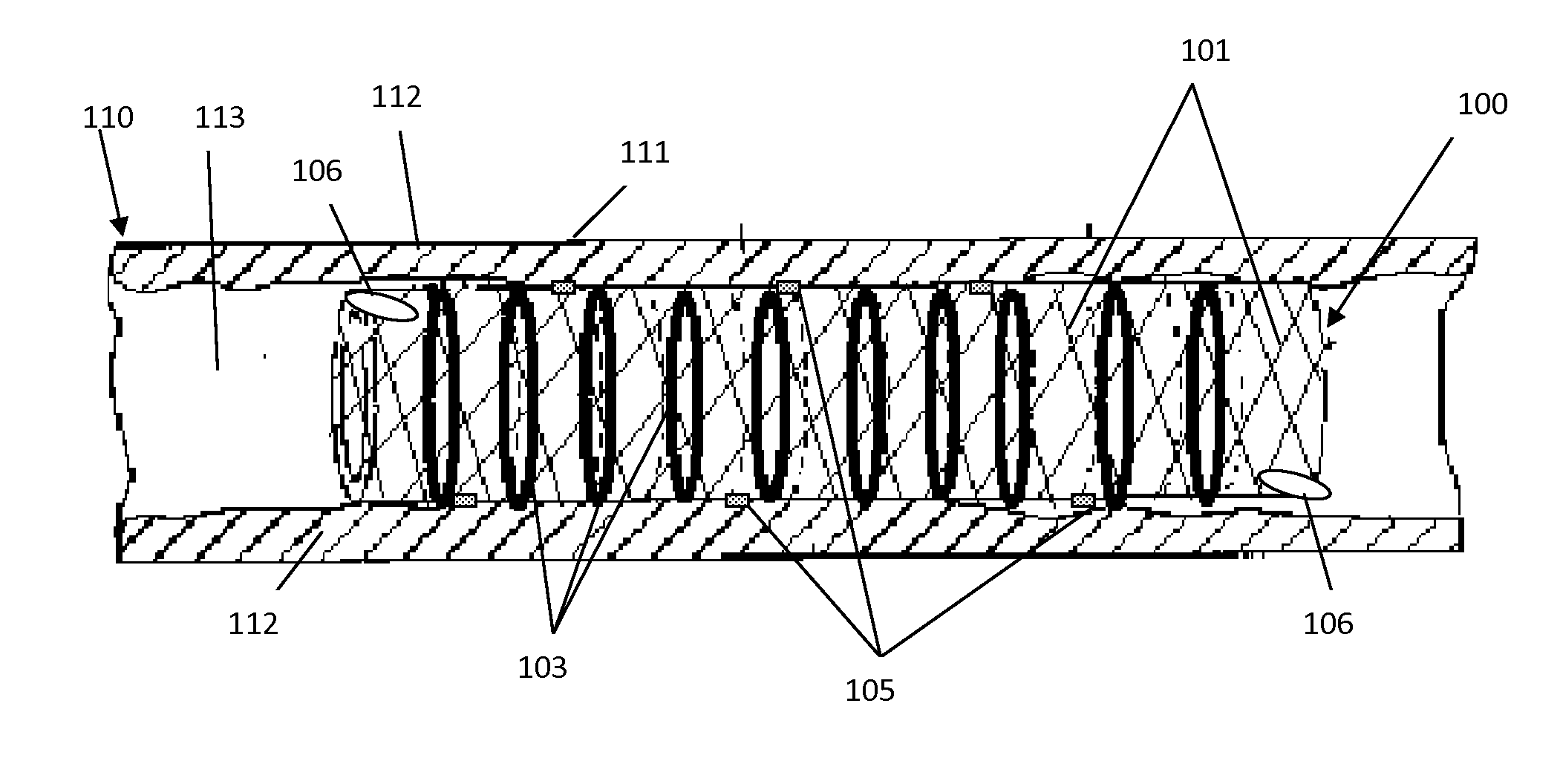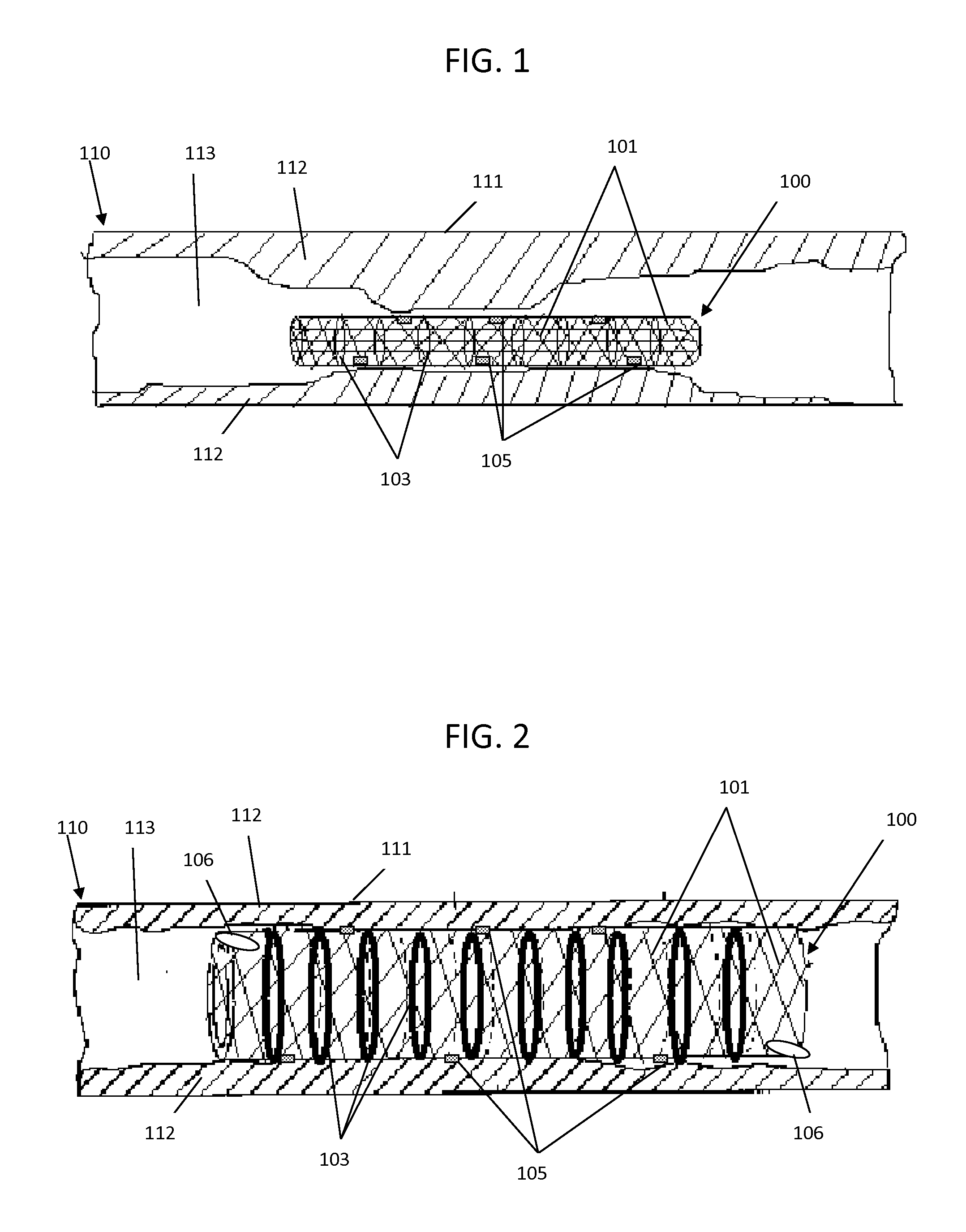Sensor Actuated Stent
a sensor-actuated stent and stent expansion technology, which is applied in the field of implantable devices for interventional therapeutic treatment or vascular surgery, can solve the problems of reduced blood flow, complex mechanisms of balloon angioplasty, and non-invasive treatments that cannot improve coronary circulation, so as to avoid additional complications
- Summary
- Abstract
- Description
- Claims
- Application Information
AI Technical Summary
Benefits of technology
Problems solved by technology
Method used
Image
Examples
Embodiment Construction
[0037]In the following detailed description, for purposes of explanation and not limitation, exemplary embodiments disclosing specific details are set forth in order to provide a thorough understanding of the present invention. However, it will be apparent to one having ordinary skill in the art that the present invention may be practiced in other embodiments that depart from the specific details disclosed herein. In other instances, detailed descriptions of well-known devices and methods may be omitted so as not to obscure the description of the present invention.
[0038]In accordance with one embodiment of the present invention, an illustrative view of a medical implant device 100 within a vessel 110 is shown in FIG. 1. The arterial wall 111 is blocked by cholesterol deposits 112 inside the lumen 113 of the artery 110 to form a blockage which restricts or blocks blood flow, leading to high blood pressure or heart attack. The stent 100 is comprised of an expandable framework structur...
PUM
 Login to View More
Login to View More Abstract
Description
Claims
Application Information
 Login to View More
Login to View More - R&D
- Intellectual Property
- Life Sciences
- Materials
- Tech Scout
- Unparalleled Data Quality
- Higher Quality Content
- 60% Fewer Hallucinations
Browse by: Latest US Patents, China's latest patents, Technical Efficacy Thesaurus, Application Domain, Technology Topic, Popular Technical Reports.
© 2025 PatSnap. All rights reserved.Legal|Privacy policy|Modern Slavery Act Transparency Statement|Sitemap|About US| Contact US: help@patsnap.com


